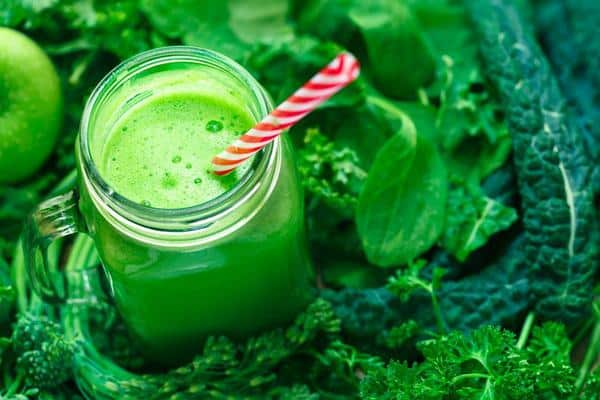Зміст
Chlorophyll is a green plant pigment with antioxidant and anti-inflammatory properties. In recent years, liquid chlorophyll has become particularly well known as a food additive. However, you should consider whether it is worth using, because the best solution might be to enrich your diet with vegetables rich in this ingredient. What are the benefits of drinking chlorophyll?
What is Chlorophyll?
Chlorophyll are photosynthetic pigments responsible for the green color of plants. They have the ability to absorb light in the visible range. All this is associated with a system of conjugated bonds, that is, double and single bonds occurring sequentially. There are many types of chlorophyll. In seed plants, for example, we find chlorophyll a and b. This compound is chemically an ester of chlorophyll in with phytol and methanol (alcohols). Chlorophyll in consists of four pyrrole rings and has a centrally located magnesium atom. From the point of view of plants, this dye is critical to life processes by participating in photosynthesis.
A person uses it to color food and cosmetic products. The most common chlorophyll is found in liquid alfalfa or derived from nettle. Has the ability to absorb unpleasant odors. It has also been a popular nutritional supplement for many years, somewhat exaggeratedly referred to as “green blood”. Liquid chlorophyll is also used in cosmetics.
Liquid chlorophyll – properties and action
Chlorophyll is a green dye belonging to the tetrapyrrole group. Epidemiological studies show that consuming large amounts of vegetables containing it is correlated with a lower likelihood of developing certain types of cancer, cardiovascular disease, macular degeneration, and cataracts. Chlorophyll itself has antioxidant properties. It has the ability to neutralize free radicals, the excess of which contributes to the development of many diseases, called civilization. It is an ingredient that is useful in the prevention of various diseases, but it also slows down the aging process of cells and tissues of the body.
Furthermore, it also has anti-inflammatory properties. Likewise, it is a source of magnesium that is essential for human health. Research shows that a diet rich in chlorophyll reduces the risk of stomach and liver cancer. However, a chemoprophylactic effect is usually noticeable with high doses of this compound. It seems that liquid chlorophyll can only be effective as part of a balanced diet, like any other supplement.
It is sometimes advertised as a way to “detoxify”, lose weight or relieve fatigue. However, it should be noted that there is no need for special support of the body during cleansing, because it has a number of mechanisms that allow you to remove metabolic products and various types of toxins.
There is also no evidence that chlorophyll in weight loss fluid accelerates the weight loss process. However, it is worth mentioning the ability of this compound to absorb unpleasant odors. As a result, liquid chlorophyll can be used for mouthwash, for example. The liquid form of this compound, derived from alfalfa, is often found on the market. Sometimes oils are added to it or enriched with vitamins. The dosage for liquid chlorophyll is usually about 5 ml three times a day. It should be dissolved in water or juice.
Liquid chlorophyll – contraindications and side effects
Liquid chlorophyll can have side effects when used in large quantities. However, in practice this happens very rarely. Usually, its introduction on the menu does not give any side effects. It is considered a relatively safe drug. However, due to the lack of clear evidence on this score, it is not recommended for use during pregnancy and lactation. Before using it, patients who have been taking medication for a long time should also consult a doctor.
Liquid chlorophyll – opinions – is it worth using?
Chlorophyll in liquids is active mainly in terms of anti-inflammatory, antioxidant and chemoprophylactic properties. Like any food supplement, it only enriches the daily menu with substances that can have a beneficial effect on health. However, it is worth considering whether this will be more beneficial than adding to the increase in the proportion of green vegetables in the diet. It is not only a source of chlorophyll, but also numerous elements and other antioxidants that enhance the antioxidant, often anti-cancer and anti-inflammatory effects of the product. They are also carriers of folate, which is so important for the prevention of cardiovascular disease. Women planning a pregnancy should also pay attention to this ingredient.
In addition, increasing the consumption of green vegetables will provide the body with a certain amount of dietary fiber, which regulates the digestive tract, improves the rhythm of defecation and is a nutrient for the intestinal bacterial flora. Dietary fiber in water-soluble form allows you to bind part of cholesterol, as well as promote the excretion of toxins from the digestive tract. Vegetables that are especially rich in chlorophyll include parsley leaf, dill, cabbage and butter salad. Also, worth mentioning are lamb, arugula and spinach salads.








